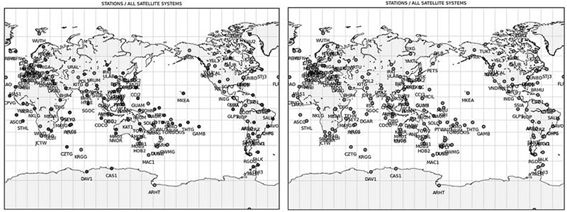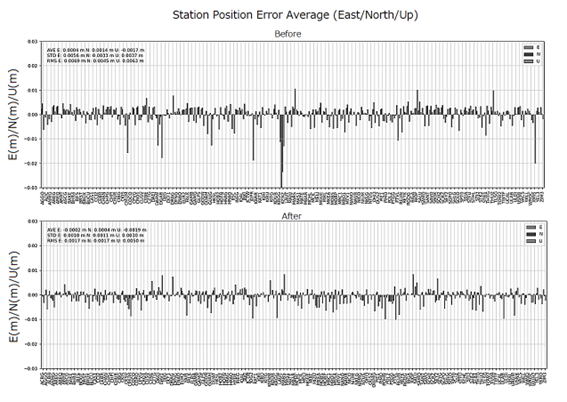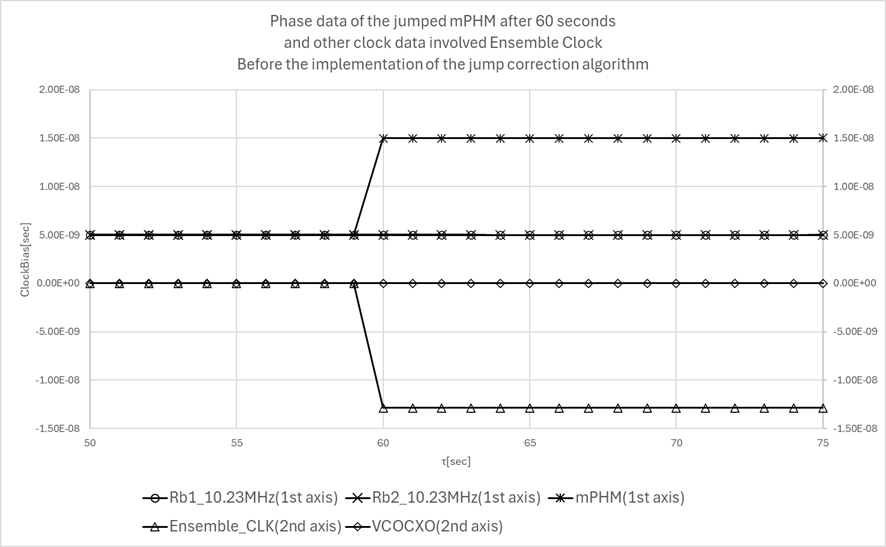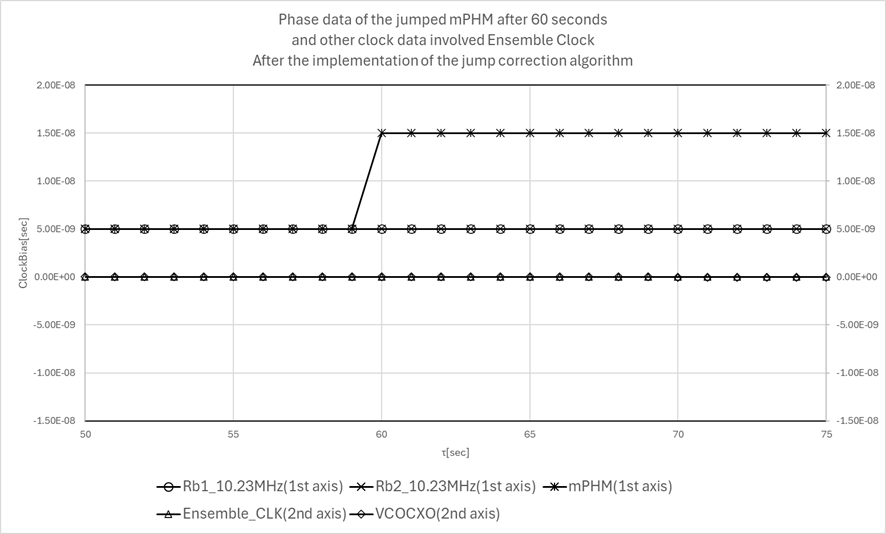Precise Orbit Determination by using MADOCA on JSS3
JAXA Supercomputer System Annual Report February 2024-January 2025
Report Number: R24ER0800
Subject Category: Space Technology
- Responsible Representative: Satoshi Kogure, Space Technology Directrate I, Satellite Navigation Unit
- Contact Information: TAKIGUCHI Hiroshi(takiguchi.hiroshi@jaxa.jp)
- Members: Sho Miyoshi, Tatsuya Nagano, Hideki Narita, Masato Okeya, Takashi Tsuruta, Hiroshi Takiguchi, Makoto Watanabe
Abstract
Satellite Navigation Unit continuously generates and provides satellite orbit and clock products essential for precise positioning using MADOCA (Multi-GNSS Advanced Demonstration tool for Orbit and Clock Analysis) and are delivered to users via a network. On the JSS3, we aim to realize fast computation for the long-term data analysis and simulation.
Reference URL
Please refer to 'MADOCA Products'.
Reasons and benefits of using JAXA Supercomputer System
mproving the accuracy of MADOCA products require long-term data analysis for modeling disturbance sources such as solar radiation pressure and optimizing various parameters. By using JSS3, we have been expecting the reduction of the data analysis time.
Achievements of the Year
In this fiscal year, we used JSS3 for the following research and development:
1) Backup analysis for MADOCA routine analysis
2) Implementation of simulated analysis function using new observable for MADOCA
2-1) Generation of simulated observation data
2-2) Precise orbit determination simulation using simulated observation data
3) Positioning analysis using MADOCA products
3-1) Evaluation of Precise Point Positioning (PPP) accuracy
3-2) Reanalysis of PPP routine analysis results
3-3) Station selection based on reference coordinate system changes, etc (Fig.1,2)
4) Fitting of MADOCA prediction ephemeris to Legacy Navigation (LNAV) and Civil Navigation (CNAV) format
5) Ensemble clock simulation by using the clock ensemble software (CHRONOS) and evaluation (Fig.3,4)
Satellite Navigation Unit participates in the International GNSS Service (IGS) Multi-GNSS Pilot Project and provides orbit and clock products using MADOCA.
This fiscal year, IGS requested a change in the reference coordinate system from IGS20 to IGb20 and a modification in the QZSS positioning signals used for satellite orbit and clock estimation from L1C/A-L2C to L1C-L5, effective from the 2025/02/02 epoch. Using JSS3, we conducted the selection of appropriate stations to accommodate these changes.
Using simulation data from various atomic clocks, we implemented an algorithm in the ensemble clock generation software CHRONOS that immediately assigns a weight of zero to any atomic clocks exhibiting anomalies, such as frequency jumps, preventing jumps in the ensemble clock data. JSS3 was used to evaluate the performance before and after this modification.

Fig.1: Changes in station distribution before and after the large-scale change of observation stations used by MADOCA (left figure -> right figure): To revise the positioning signals used in MADOCA, we conducted multiple station position estimations and satellite orbit and clock determinations for one week using JSS3. Leveraging JSS3 allowed us to perform a large number of calculations in a short period of time.

Fig.2: Changes in station position estimation errors before and after the large-scale change of observation stations used by MADOCA (top figure -> bottom figure): The graphs show the differences (East/North/Up) between the station position estimation results obtained using MADOCA on JSS3 and those from IGS, before and after the station modifications conducted between 2025/01/01 and 2025/01/07. By utilizing JSS3 for appropriate station selection, we improved the station position estimation results, bringing them closer to IGS estimates. As a result, similar estimation accuracy has been maintained even after the changes implemented on 2025/02/02.

Fig.3: A plot of the phase data for each atomic clocks, the ensemble clock, and the VCOCXO generated by CHRONOS before algorithm implementation. At 60 seconds of elapsed time, a 1E-08 [sec] jump was introduced in the mPHM. Since the pre-implementation data retains the weight of the anomalous atomic clocks, the ensemble clock also exhibits a jump.

Fig.4: A plot of the phase data for each atomic clocks, the ensemble clock, and the VCOCXO generated by CHRONOS after algorithm implementation. At 60 seconds of elapsed time, a 1E-08 [sec] jump was introduced in the mPHM. However, due to the newly implemented algorithm that immediately assigns a weight of zero to the anomalous oscillator, no jump is observed in the phase data of the ensemble clock.
Publications
N/A
Usage of JSS
Computational Information
- Process Parallelization Methods: N/A
- Thread Parallelization Methods: OpenMP
- Number of Processes: 1
- Elapsed Time per Case: 30 Minute(s)
JSS3 Resources Used
Fraction of Usage in Total Resources*1(%): 0.03
Details
Please refer to System Configuration of JSS3 for the system configuration and major specifications of JSS3.
| System Name | CPU Resources Used(Core x Hours) | Fraction of Usage*2(%) |
|---|---|---|
| TOKI-SORA | 0.00 | 0.00 |
| TOKI-ST | 1371.17 | 0.00 |
| TOKI-GP | 0.00 | 0.00 |
| TOKI-XM | 0.00 | 0.00 |
| TOKI-LM | 1472.35 | 0.11 |
| TOKI-TST | 198691.14 | 3.57 |
| TOKI-TGP | 0.00 | 0.00 |
| TOKI-TLM | 554.94 | 1.47 |
| File System Name | Storage Assigned(GiB) | Fraction of Usage*2(%) |
|---|---|---|
| /home | 1119.00 | 0.75 |
| /data and /data2 | 28110.00 | 0.13 |
| /ssd | 0.00 | 0.00 |
| Archiver Name | Storage Used(TiB) | Fraction of Usage*2(%) |
|---|---|---|
| J-SPACE | 0.00 | 0.00 |
*1: Fraction of Usage in Total Resources: Weighted average of three resource types (Computing, File System, and Archiver).
*2: Fraction of Usage:Percentage of usage relative to each resource used in one year.
ISV Software Licenses Used
| ISV Software Licenses Used(Hours) | Fraction of Usage*2(%) | |
|---|---|---|
| ISV Software Licenses(Total) | 0.00 | 0.00 |
*2: Fraction of Usage:Percentage of usage relative to each resource used in one year.
JAXA Supercomputer System Annual Report February 2024-January 2025


